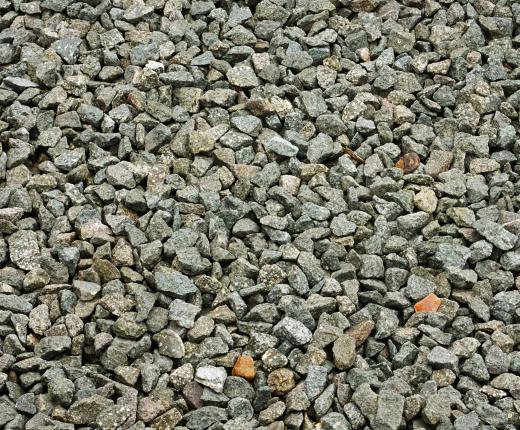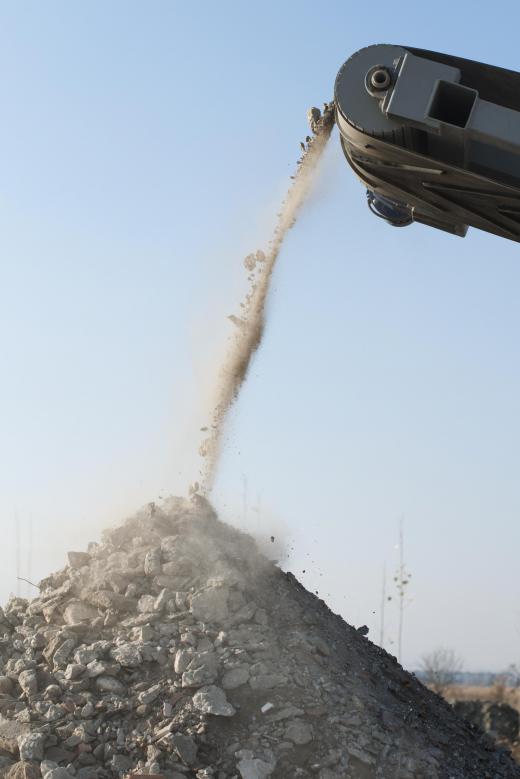A gravel conveyor is a piece of industrial equipment used to transport and distribute gravel and other bulk materials. These machines often resemble a traditional conveyor belt, though they are often much longer and may extend for miles in some applications. Some specialized trucks can also act as gravel conveyors, and are used to transport the gravel and spread it over the job site as needed. A gravel conveyor can be used to bring gravel to a site, remove gravel from an area, or simply transport the gravel for storage and processing.
The standard gravel conveyor consists of a wide belt made from rubber or plastic composite materials. Steel gravel conveyors can also be found in some areas, though these units are noisy and more expensive than other models. The average conveyor features a U-shaped trough to hold the gravel in place and keep it centered on the belt, and some may also feature side rails for additional protection. An industrial motor is used to rotate rollers or axles along the length of the belt, which in turn move the belt and the materials it is being used to convey.

This type of conveyor is often found in and around a gravel quarry. Instead of relying on trucks to transport small loads of gravel, a gravel conveyor can continuously move large quantities of material out of the quarry. The conveyor may travel into a storage facility or even directly into a loading area for trucks. Some conveyors simply carry the gravel out of the quarry and arrange it is piles for future processing. When used in conjunction with other types of industrial equipment, a gravel conveyor can carry rocks and gravel to washing plants for cleaning and separation.

Gravel conveyors are important tools on remote work sites. For example, crews building very large structures like dams or bridges may have a gravel conveyor installed to provide easy access to this material. This type of application is particularly beneficial in areas that are difficult to access by truck, either due to remoteness or terrain. A gravel conveyor can even be extended out across the ocean for crews building bridges and tunnels.
Some trucks also act as gravel conveyors, though they are designed to carry single loads rather than a continuous stream of material. These trucks bring loads of gravel to sites where crews are constructing roads, parking lots, or certain types of landscaping. Once the truck is on site, it relies on a hydraulic or pneumatic mechanism to spray the gravel out across a designated area. This can help to speed up jobs that involve paving or loose gravel covering a large area.
